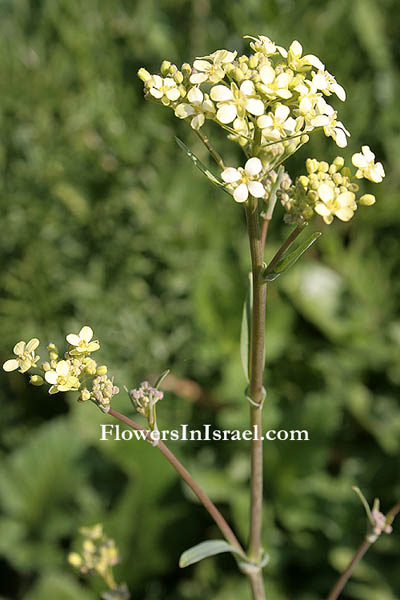Hebrew: גרגיר הנחלים, Arabic:(رشاد ماء (جرجير مائي
| Scientific name: | Nasturtium officinale R.Br. | |
| Common name: | True Water-Cress | |
| Hebrew name: | גרגיר הנחלים | |
| Arabic name: | (رشاد ماء (جرجير مائي | |
| Family: | Cruciferae / Brassicaceae, מצליבים |

|
| Life form: | Hemicryptophyte | |
| Stems: | Up to 60cm long, erect to ascending or creeping, hollow, juicy, much branched, with roots on stem nodes; glabrous, fistulose | |
| Leaves: | Alternate, rosette, dissected, dentate or serrate | |
| Inflorescence: | Terminal raceme | |
| Flowers: | 4 white petals | |
| Fruits / pods: | Siliques, 1.3-1.8cm long, terete, glabrous; seeds, spherical, dark red-brown, reticulate | |
| Flowering Period: | February, March, April, May, June, July, August, September | |
| Habitat: | Riparian, humid habitats | |
| Distribution: | Mediterranean Woodlands and Shrublands, Semi-steppe shrublands, Deserts and extreme deserts, Montane vegetation of Mt. Hermon | |
| Chorotype: | Plurireginalbor-trop | |
| Summer shedding: | Ephemeral |

Derivation of the botanical name: Nasturtium, Latin nasi tortium, a twisted nose, due to the plant's pungent taste. officinale, , officina, herb pharmacy; alias, of or pertaining to; sold as an herb; medicinal. The Hebrew name: גרגיר, gargir, Aramaic-Syrian: גרגירא, gargira ( = cress); Akkadian: gingiru, Arab, jarjir ( = water cress).

|